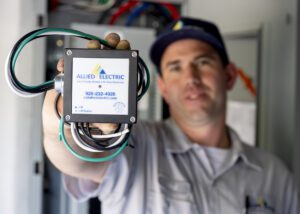Is My Home More Likely to Be Struck by Lightning?
You know that old saying “lightning never strikes the same place twice”? Well, someone might want to tell that to the poor Empire State Building getting zapped around 25 times per year! When it comes to our homes, the threat of a lightning strike can be pretty nerve-wracking. But is your home more likely to be struck than others?
The Science Behind Lightning Strikes
Before we dig into what makes a home more likely to be struck by lightning, let’s first talk about how this crazy phenomenon even works. Lightning is a massive spark of electricity crackling between storm clouds and the ground.
It happens when positive and negative charges in the atmosphere get so lopsided and imbalanced that they have to forcibly neutralize each other. We’re talking city-block-wide jolts of electricity traveling at 60,000 mph and hitting temperatures hotter than the surface of the freakin’ sun! Insane, right?
Factors That Increase Risk
Location, Location, Location
So what makes some poor souls’ homes more more likely to be struck by lightning? For starters, location plays a huge factor. Homes in regions known for frequent thunderstorms, like Florida or the Great Plains, are naturally going to be in the lightning crosshairs way more often.
Height Matters
Height can put a target on a house too. Taller structures just have this way of tempting lightning bolts like a metal stick attracting static electricity. It tends to strike the highest point in any given area, so hilltop homes and multi-story buildings are at higher risk.
Materials Make a Difference
Speaking of materials, houses made with metal components or rocking a metal roof also more more likely to be struck by lightning. I know it sounds counterintuitive since we’re talking about electricity here, but metal is an excellent conductor. The good news is proper grounding can mitigate a lot of those risks.
Trees and Surroundings
Tall trees surrounding your home? Unfortunately, those can act like natural lightning rods, potentially letting a strike jump from the branches right onto your roof – especially if they’re touching or practically high-fiving your house.
Real Stories, Real Risks
It’s some scary stuff, but I’ve seen the risks up close and personal. My neighbor John lives in a cute little cabin on a hill, surrounded by these massive pine trees. Well, one summer during a nasty thunderstorm, you’ll never guess what happened – lightning struck one of those trees and came right over to his house! John was OK, but the damage was no joke.
How to Protect Your Home
Install a Lightning Rod
So what can we homeowners do to lightning-proof our castles? Getting a lightning rod installed is one of the simplest solutions. It’s a big hunk of metal mounted to attract bolts like a magnet, with a wire to safely direct them into the ground before they can cause havoc.
Grounding Systems
Having a solid grounding system for your home’s electrical is another must. This just means giving that lightning a nice safe path to follow into the earth, minimizing the risk of fire or circuit fry-outs.
Surge Protectors
Using surge protectors for all your electronics is smart too. Lightning strikes can zap some serious power surges through your wiring that’ll fry TVs, computers, you name it. Those little plug-in protector boxes can be life savers.
Trim Those Trees
Finally, keep those trees trimmed back and any big branches away from hovering over your roof. You don’t want a bolt having an easy tree-to-home jumping path.
Busting Myths About Lightning
Lightning Never Strikes the Same Place Twice
Now, I’d be remiss if I didn’t address a few classic lightning myths while we’re on the topic. First off, that “lightning never strikes the same place twice” stuff is bogus. See: the Empire State Building getting bombarded yearly.
Rubber Tires Protect You in a Car
And hate to break it to you, but it’s not the rubber tires protecting you pulled over in a thunderstorm – it’s the metal frame of your car safely directing bolts around you and into the ground. The rubber tires are just allowing that to happen.
You’re Safe Indoors
The same goes for thinking you’re protected from strikes just because you’re indoors. Lightning loves any entry point, including wiring, plumbing, you name it. Put down the video games and step away from the toilet when storms hit!
Summary
So in summary, lightning is an intense force of nature that can quickly turn disastrous for an unlucky home. Knowing the risks and taking the right precautions? That’s the key to not losing sleep over potentially electrifying light shows.
